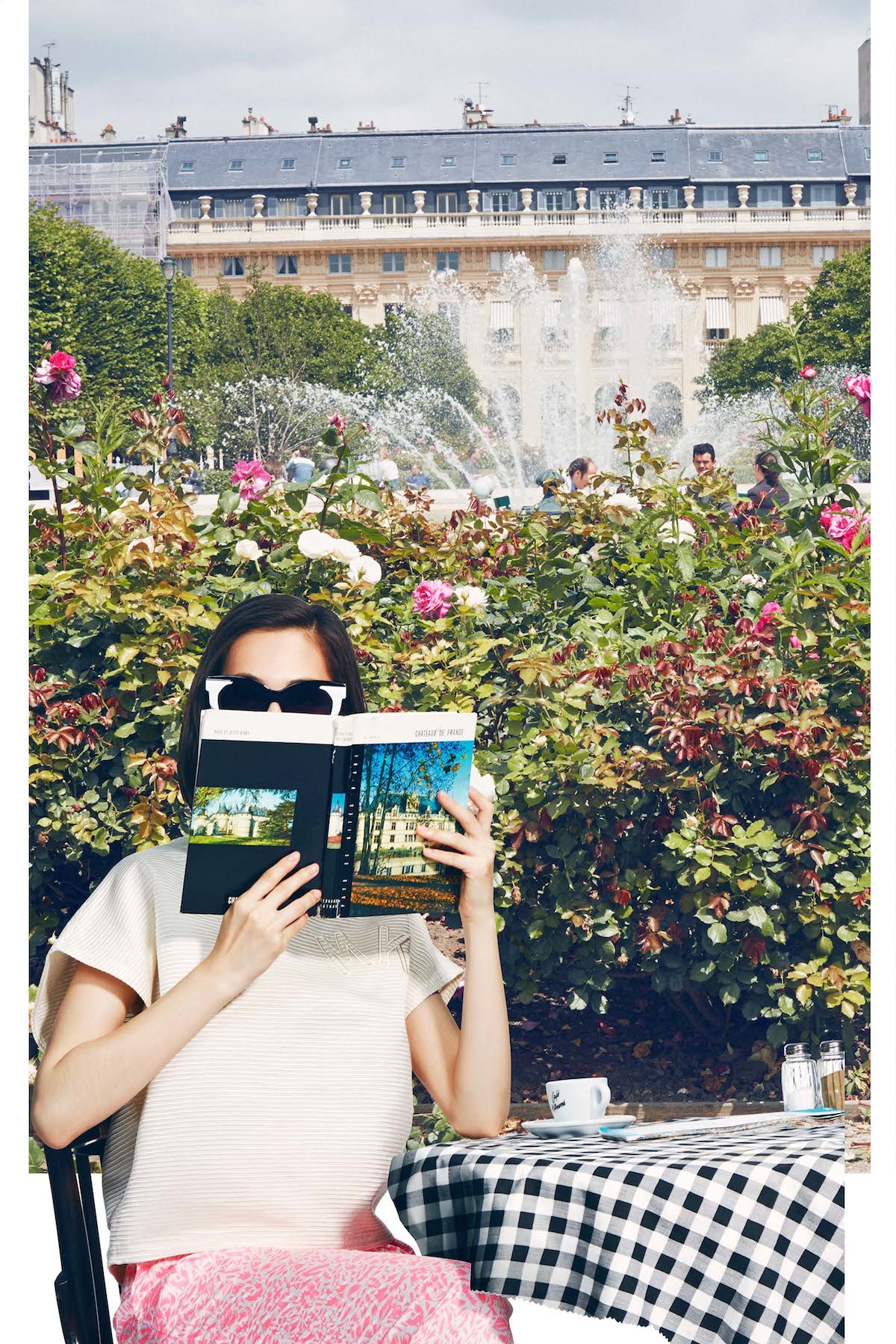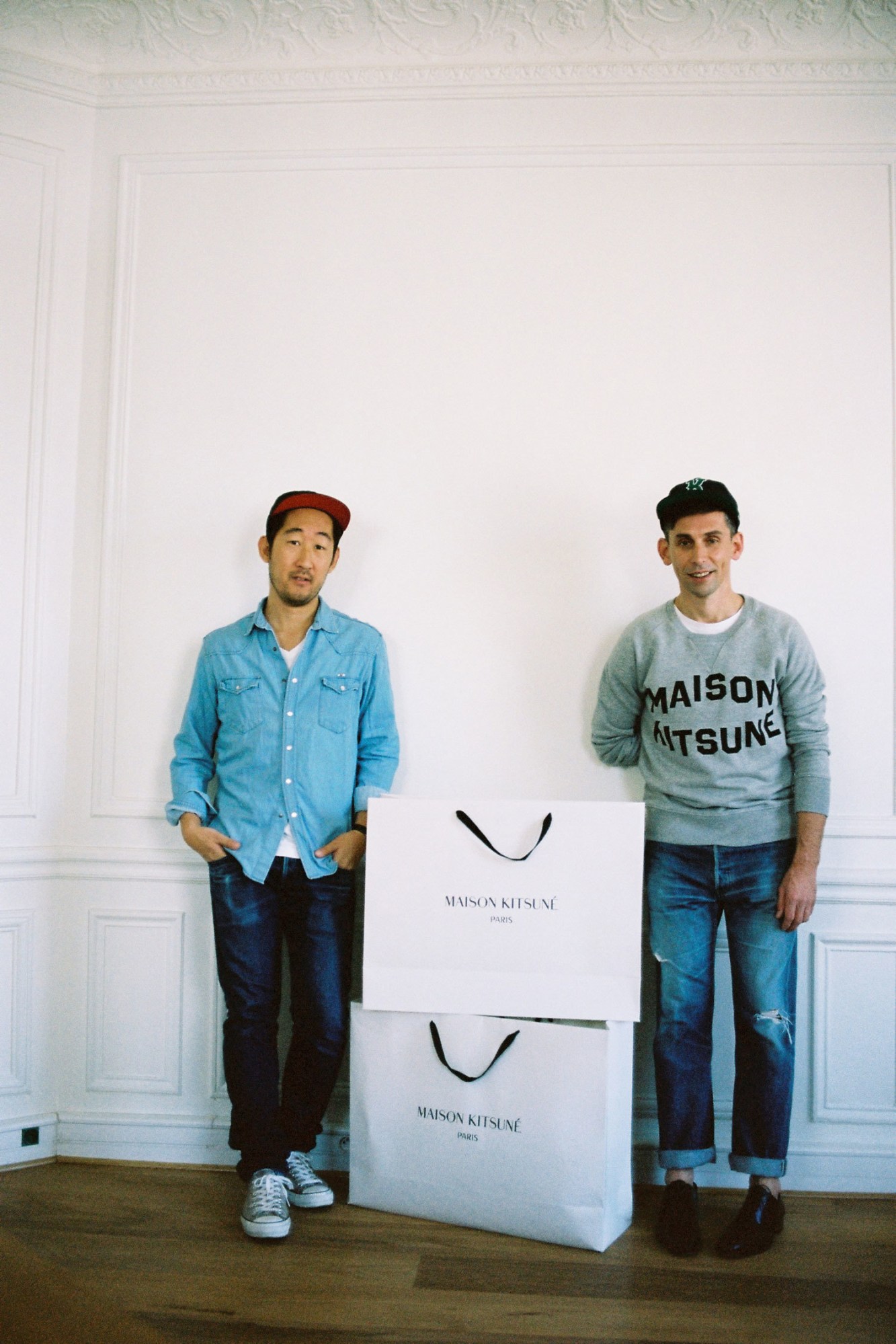Launched in 2002 by Frenchman Gildas Loaëc, former manager and art director of Daft Punk and Masaya Kuroki, an architect turned fashion designer, it operates both an en vogue clothing brand and hip record label. While their fashion offers a Tokyo-meets-Paris twist on preppy basics, their label has signed acts including Kilo Kish, Is Tropical, Hot Chip, The Teenagers, pushing a relentlessly of-the-moment sound.
i-D met up with Gildas in Paris as the duo were getting ready for their autumn/winter 15 menswear presentation as well as the opening of their new boutique – complete with its own coffee shop Café Kitsuné – in Pigalle. Un café-crème s’il-vous-plait!
Why is it coherent to have both a record label and fashion brand under one roof?
When we created Kitsuné, we simply thought of what we most enjoy doing. On one hand, we love working with musicians, coaching them, coming with them to the studio, participating in the creation of their image, working with directors on their music videos. On the other hand, we also like designing pieces that we want to wear, picking fabrics, telling stories, finding concepts, thinking of how we position ourselves on the market.
This forces us to always remain curious and come up with new ideas. It’s exciting because we love the idea of developing both a strong brand and a strong enterprise. The two are different worlds with different codes, environments, cycles – but both resonate, in the amount of details, care given, vision. The idea was always to have both a label and a brand, one was never the subsidiary of the other. They work independently but in harmony.

The web has led to a radically different consumption of music. How have you adapted to this?
The world of music has always been in a constant state of evolution. Today, it is accessible almost for free, mainly by streaming. We focus on developing a sense of community: we’re active on Youtube, Soundcloud, Spotify, Deezer. We’re aware that what matters today is the number of followers and hits; this is the kind of data we try to focus on.
Kitsuné is a Franco-Japanese union. How is this reflected in your clothing?
Kitsuné means ‘fox’ in Japanese. It is seen as a magical animal that can have a multitude of lives and appearances. The same applies to us, we have different facets. Japan is our second home as Masaya still lives in Tokyo. It is also our leading market in terms of sales. I live in Paris, and it keeps me on my toes since it is highly competitive in terms of fashion. For the spring/summer Maison Kitsuné collection, we drew inspiration from our Parisian roots, we wanted to pay homage to this idea of French elegance, often described as “effortless’: simple, chic, envied worldwide. Season after season, we use the same streamlined silhouettes, an attention to details and finishing as well as denim made in Japan.
You often collaborate with young designers and brands, friends – is there a Kitsuné gang?
Indeed, we have collaborated with Petit Bateau, Oliver Peoples, Aigle, Olympia le Tan, as well as Japanese labels Ambush and Loopwheeler. More recently still, we’ve collaborated with Danish designer Peter Jensen, and often work with Michel Vivien.
These collaborations allow us to strengthen our French visibility as well as push further an international one. We like being able to work with ancient craftsmanship one season and fresh talent the following; it is always a union between two very different houses, clients – and that’s what one needs to evolve. In April we’re even launching a chocolate box designed by chocolatier Pierre Marcolini and a capsule collection inspired by baseball for Reebok!
Credits
Text Alice Pfeiffer
Portrait Sara Nataf
Campaign Image Paul Bliss
